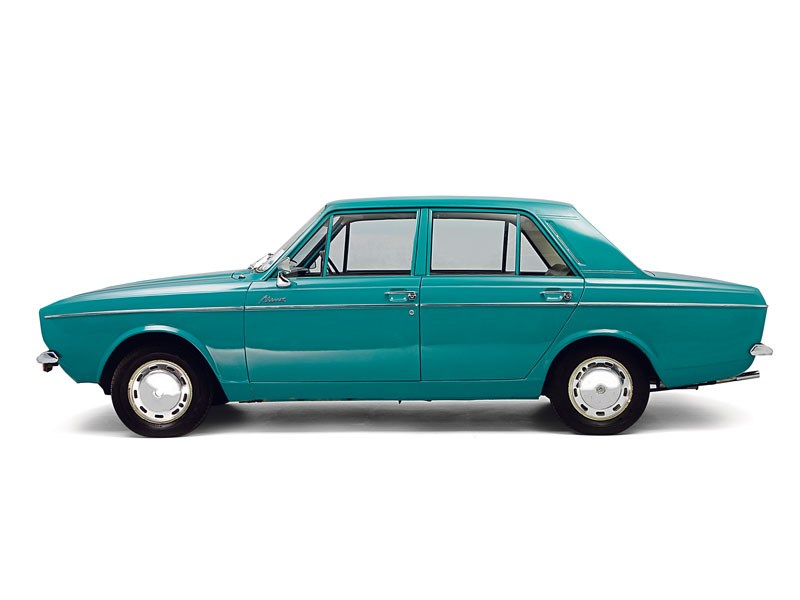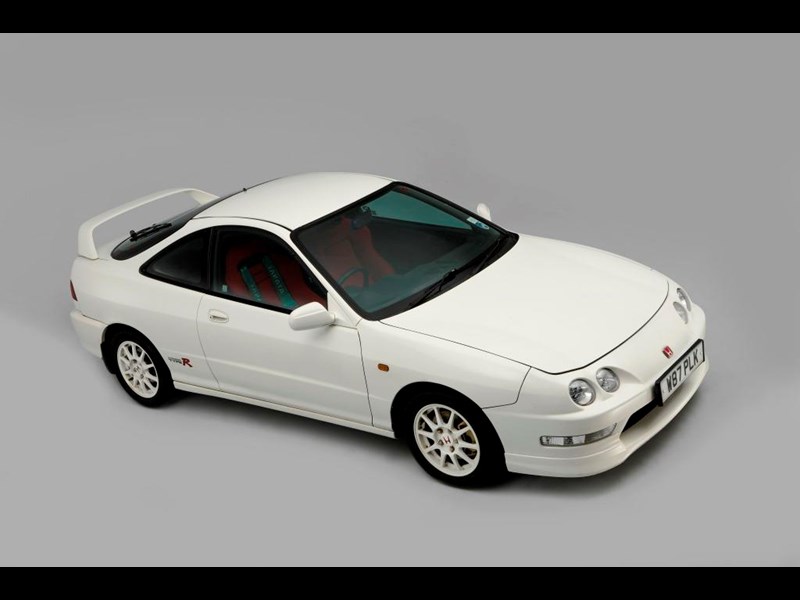The Honda S2000 may have ceased production a mere half-decade ago, but from the minute it was unveiled it was guaranteed to become collectible. A no-compromise roadster of the classic rear-wheel drive two-seater variety, the S2000 was intended to be launched for Honda's 50th birthday. But proving that compromise wasn't a word in the Honda dictionary, when company execs tested the prototype S2000 ad felt it needed further work, the project was delayed by a year.
As a result the S2000 was revealed in time for Honda's 51st birthday, and since then it's gone down a storm with press and owners alike. And why wouldn't it? The S2000 looks great, it goes like stink and it's fabulous to drive. Yet you can buy one from just £4000. Why wouldn't you?
VITAL STATISTICS
UK-spec
Engine 1997cc/4-cyl/DOHC
Power 237bhp@8300rpm
Torque 153lb ft@7500rpm
Top speed 149mph
0-60mph 5.8sec
Economy 28mpg
Gearbox 6-speed manual
WHAT TO LOOK FOR
Thanks to the fitment of some plastic panels (such as the front and rear bumpers), an aluminium bonnet plus modern (but not generously applied) rustproofing, there should be no significant corrosion on any S2000 - especially if the owner has invested in some wax treatment. But accident damage is another matter, especially on older cars with their less well developed suspension.
Lift the bonnet and look at the inner wings, checking for signs of rippling or welding. Do the same with the boot floor; any poor crash repairs will be obvious in these areas.
Whilst rust anywhere is unlikely, it's still worth analysing the inner rear wheelarches and the leading edge of the sills. Stone chips that have been left to fester can result in corrosion, although it's unlikely to have amounted to much, yet.
Honda offered an optional aluminium hard top, which came as standard on GT-spec cars; there are also aftermarket hard tops available. A fitting kit is required to install a hard top, so any S2000 that hasn't previously featured one will need to have the necessary parts fitted. A used roof, stand, cover and fitting kit can be bought for around £1,000 from owners' forums; fitting details are online at tinyurl.com/75fzlj. Any car with a hard top would also come with a stand and cover, so check they're there. All S2000s are fitted with an electrically retractable soft top whether or not there's a hard top with the car. The soft top does a superb job of keeping the elements out, so if you're used to flappy useless hoods usually fitted to older classics, you're in for a pleasant shock. The soft top is easy to use, so while a hard top is nice for security (and added refinement), the lack of one shouldn't be a deal breaker. You need to check the soft top closely, along with its mechanism, so put it up and down a few times to ensure it works smoothly - be especially wary of cars that have had their hard tops fitted for months (or even years).
Check the hood material around the side windows, as it can wear - also ensure that the plastic window of a pre-MArch 2002 car isn't damaged. LAter cars got a glass rear window; a replacement plastic screen costs around £400, while converting to glass is closer to £1000.
ENGINES
The magnificent naturally-aspirated VTEC four-pot that powers all S2000s is nothing less than a masterpiece. It'll rev to 9000rpm and thanks to the fitment of variable valve timing it's worth venturing towards the red line on a regular basis, to savour the howl as well as the punch. All UK cars got a 1997cc unit, but US and Japanese cars were fitted with a 2157cc unit from 2003 and 2005 respectively.
Very complex, the VTEC engine is nonetheless generally reliable as long as it's properly maintained. That means regular servicing; the original schedule stipulated every 9000 miles or 12 months. Thanks to the fulfilment of a timing chain there's no cambelt to renew, but a healthy engine will get through up to a litre of oil very 1000 miles - and nothing less than fully synthetic will do. Such a high oil consumption has led to lots of engines being damaged through their bearing shells breaking up from a lack of lubrication, so listen for untoward noises at tickover. If a new engine is required, expect to pay £2000-£3000 for a decent used unit.
There are other things that can go wrong too, so on your test drive, check for any hesitation when pulling away. The most likely culprit will be a failed MAP (Manifold Absolute Pressure) sensor on top of the inlet manifold - bit it could also be a dodgy lambda sensor. The MAP sensor can sometimes be cleaned up; if not, new ones cost around £40. Meanwhile, there are two lambda sensors which have to be replaced if they fail; new ones cost £170.
Naturally you should expect the engine to deliver smooth; linear power throughout the rev range, but if there's any misfiring it could be down to blocked or dirty injectors; a fuel additive may fix things, or new injectors are £70 apiece. Misfires could also be down to one or more faulty coil packs - there's one for each cylinder, and new ones cost £125 each.
Overheating shouldn't be an issue; if it is, expect major trouble ahead as the engine is all-alloy and doesn't respond well getting too hot. On cars built up to 2003 there shouldn't be any more than three bars showing on the digital temperature read out; later S2000s featured different instrumentation, and on these it's OK for up to seven bars to be showing.
TRANSMISSIONS
Power is transmitted to the rear wheels via a six-speed manual gearbox (there was no auto option) and a Torsen limited-slip diff. You're unlikely to encounter significant problems, aside from a worn-out clutch once 70,000 miles have been racked-up. New ones cost £430.
STEERING & SUSPENSION
Electric power steering was standard from the outset, but early cars were criticised for their lack of feel. Honda responded by fitting a less direct rack in 2004; combined with significant suspension changes, the difference in the driving experience is very noticeable. Whatever is fitted, expect it to be reliable.
More likely to be a problem is the imprecise handling because of split castor bushes and/or misaligned suspension. Repairs are complicated by the fact that the offset bolts through the Metalastik lower wishbone bushes tend to seize, and much cutting plus the wholesale replacement of the wishbones is the only solution.
As if this isn't enough, the radius arms incorporated into the rear suspension design are also fitted with offset bolts through their bushes, and these also seize - putting everything right with aftermarket parts can run to £1000 if it's been neglected. That's why it's worth looking in the service history for evidence of the suspension having been adjusted and greased regularly.
WHEELS & BRAKES
All S2000 were supplied with alloy wheels, initially 16 inches then from 2004 they were 17 inches across. Various designs were fitted; whatever is there it's worth checking for corrosion as many cars were afflicted with it. Some cars got replacement wheels under warranty; if you're a stickler for originality it's worth checking that the correct design is fitted.
With servo-assisted discs all round (ventilated at the front) and anti-lock tech as standard for all cars, the S2000's anchors aren't lacking. However, while the footbrake works superbly, the handbrake is notoriously poor, although it should be able to pass an MoT easily enough. Check that it'll hold the car on an incline; if it doesn't, it should be simply a matter of adjusting and lubricating it.
TRIM & ELECTRICS
Leather trim was standard from the outset, and thanks to the use of good-quality hide there shouldn't be any wear issues unless the car has been left in the sun and the trim has been allowed to dry out and crack up. The bolsters may be worn on high-mileage cars and the stitching could show some signs of wear, but the leather itself should be fine.
The quality of some of the interior plastics left a lot to be desired, especially some of the clips and fixings. The standard radio is poor, so lots of S2000s have an aftermarket unit fitted; whoever installed it will probably have damaged the radio surround as it's fragile.
Predictably, the S2000 features an ECU that manages key aspects of the car, not least of all the fuelling and ignition. By modern standards it's not all that complex and it's possible to buy a diagnostic tool for £40, or somebody on the club forum will probably lend one to you. With one of these you can diagnose faults and also see if there are any electrical or electronics issues in the car's history.
OUR VERDICT
Proving that Honda got the car right at the outset, there were only minor changes to the S2000's specification during its decade of production. However, they were useful changes; early cars were easy to get out of shape which is why the suspension was upgraded several times. By 2005 (for the 2006 model year) ESP was offered and from 2007 it was standard - and it's well worth having. As a result it's worth going for a later car if you can afford one, especially for track day work.
Significantly modified cars should generally be avoided, as reliability might be compromised. The standard car is so good there's really no need for upgrades.
Also be wary of personal imports, especially if they have no service history. Watch too for neglected cars - there's no shortage of tatty S2000s out there but there are lots of minters as well.
The key thing is not to rush into a purchase and buy a dog, only to find that the cost of bringing it up to standard is higher than buying a top example. That's advice that may be sound for any used car - but because the S2000 is such a recent classic, it's easy to assume you can disregard it. You can't...














































